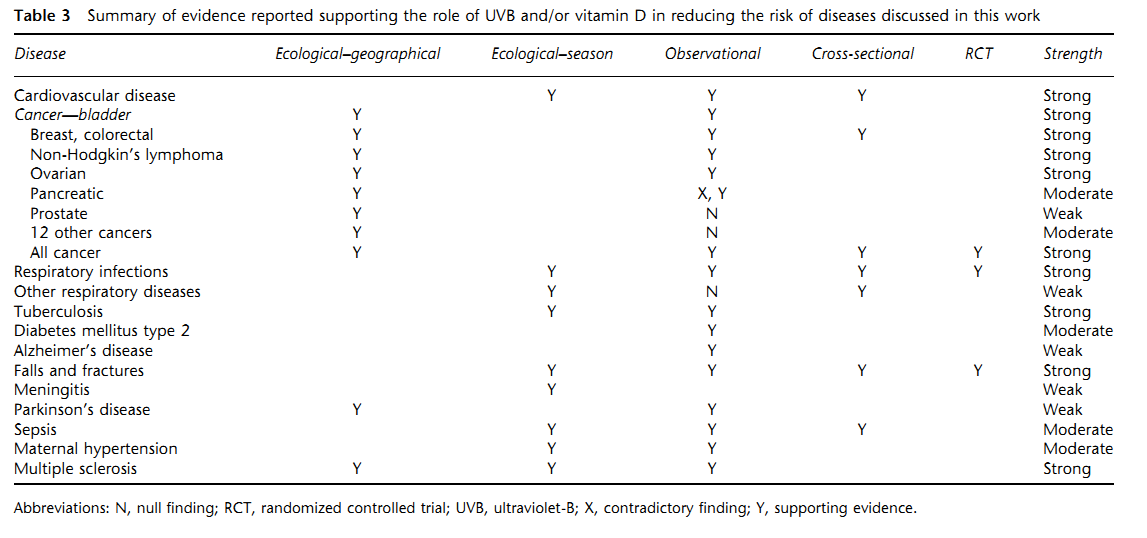Increase life expectancy by 2 years if double Vitamin D levels – Grant
An estimate of the global reduction in mortality rates through doubling vitamin D levels.
Eur J Clin Nutr. 2011 Jul 6. doi: 10.1038/ejcn.2011.68.
Grant WB. Sunlight, Nutrition, and Health Research Center, San Francisco, CA, USA.
Background/Objectives:The goal of this work is to estimate the reduction in mortality rates for six geopolitical regions of the world under the assumption that serum 25-hydroxyvitamin D (25(OH)D) levels increase from 54 to 110?nmol/l.
Subjects/Methods:This study is based on interpretation of the journal literature relating to the effects of solar ultraviolet-B (UVB) and vitamin D in reducing the risk of disease and estimates of the serum 25(OH)D level-disease risk relations for cancer, cardiovascular disease (CVD) and respiratory infections.
The vitamin D-sensitive diseases that account for more than half of global mortality rates are
CVD,
cancer,
respiratory infections,
respiratory diseases,
tuberculosis and
diabetes mellitus.
Additional vitamin D-sensitive diseases and conditions that account for 2 to 3% of global mortality rates are
Alzheimer's disease,
falls,
meningitis,
Parkinson's disease,
maternal sepsis,
maternal hypertension (pre-eclampsia) and
multiple sclerosis.
Increasing serum 25(OH)D levels from 54 to 110?nmol/l would reduce the vitamin D-sensitive disease mortality rate by an estimated 20% .
Results:The reduction in all-cause mortality rates range from
7.6% for African females to
17.3% for European females.
Reductions for males average 0.6% lower than for females.
The estimated increase in life expectancy is 2 years for all six regions.
Conclusions:Increasing serum 25(OH)D levels is the most cost-effective way to reduce global mortality rates , as the cost of vitamin D is very low and there are few adverse effects from oral intake and/or frequent moderate UVB irradiance with sufficient body surface area exposed.
Just one of the tables in the paper

📄 Download the PDF from VitaminDWiki
